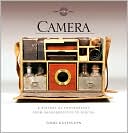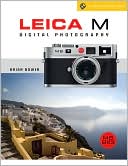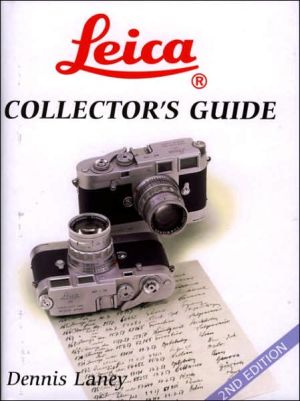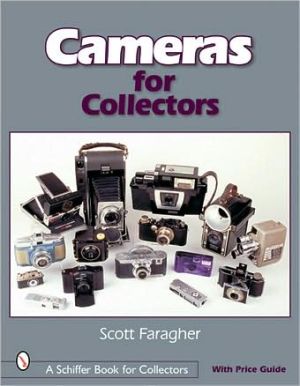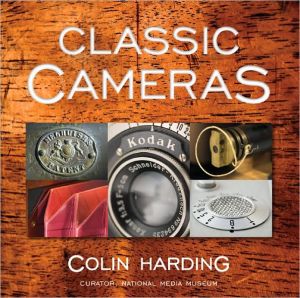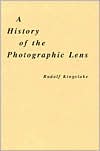Leica: Witness to the Twentieth Century
The Leica is both a product of the twentieth century's inventive spirit and the means by which that spirit could be documented for posterity. As the first handheld camera, the Leica made possible a new kind of documentary photography, and included among its devoted fans are many of the century's greatest photographers. Its combined qualities of precision and compactness made it an essential tool for photographers everywhere, and today more than ever the Leica is prized by collectors.
Search in google:
The fascinating history of a twentieth-century icon—the first handheld camera—and the people who use it.Publishers WeeklyWith the development of the 35mm Leica camera in 1913-1914 by Oscar Barnack at the Ernest Lietz factory, in Wetzlar, Germany, photography became portable, a lens through which the rapid change of the 20th century could be observed and recorded on the fly. Used by the likes of American war correspondent Robert Capa, anti-Nazi sociologist Gisele Freund and revolutionary photographer Henri-Cartier Bresson, the Leica also attracted Nazi sympathizer Paul Wolff, controversial Third Reich documentarian Leni Reifenstahl, and the German military. This 9" x 11" history of the Leica includes, among 120 color illustrations, a full-size color photograph, published in a 1944 issue of the German magazine Signal, of German soldiers riding on a tank's shadowy bulk past a burning house on the Eastern front. This is one of the most chilling photos in the book and one of the few full-size selections that is not a "best of" rendered slightly threadbare through over-reproduction. One page later, a strikingly undersized reproduction of a concentration camp is the only evidence of how, according to the text, the SS "photographed in great detail [using the Leica] the inhuman barbarities committed in the concentration camps throughout Europe"-a questionable juxtaposition at best. The text, by Italian journalist Pasi, is stilted to the point that it is often difficult to follow the history of the Leica's evolution or the significance of its innovations; however, there is enough technical information, with enlarged photos of each model and explanatory notes on lenses, viewfinders, range finders, film speeds and shutter-release buttons, to satisfy professionals and devotees. While the selection of smaller photographs is extensive and varied, the unpredictable sizings and intrusion into large photographs by small photographs and information boxes often detract from the photographs' impact. (May) Copyright 2004 Reed Business Information.
The birth of a star10Prehistory : the world in poses12Wetzlar, birthplace of the Leica16Leitz : quality as the objective18Oskar Barnack and Max Berek : the diabolical pair20Ur-Leica22The Leica is ready and goes into the streets24Leica I26Oskar's winning idea : "small negatives, large pictures"28The society debut34A pioneer forgotten and rediscovered : Paul Wolff36Ruedi, Feininger, Kisselbach42The Leica in the clouds : someone up there sees us44Leica II46Leica 250 reporter48Leica IIId50Alexander Rodchenko52Andre Kertesz54Henri Cartier-Bresson56X-ray of success : the power of advertising58Leni Riefenstahl60Gisele Freund62The Leica goes to war64The Nazi period : from apotheosis to disaster66Robert Capa681939-45 : cameras in military uniforms70Signal : the hazardous birth of front-line reporting72USSR : Stalin wants it too : the production of Leica copies begins801945 : the return to life and the rebirth of democracy82The difficult rebirth84Postwar hardships86The success is repeated : the power of the system88Magnum90Elliott Erwitt92Mario De Biasi94Piergiorgio Branzi96Robert Doisneau98The turning point : the Leica M3100Inge Morath102Ernesto Fantozzi104Surprises : Yul Brynner, actor and great photographer106Apotheosis and pride108Ladies and gentlemen, her majesty the Leica110Leica M4112The sixties114Gianni Berengo Gardin114Marc Riboud118Joseph Koudelka120The obligatory decision : leicaflex122Jim Marshall124Fred J. Maroon126Alberto Diaz Gutierrez126Leica M5128Mario De Biasi130Leni Riefenstahl132From here to eternity134Return to the origins : the revenge of the mechanical136Passage to a new world138Stefan Thonesen138Sebastiao Salgado140Luis Castaneda142Claus Bjorn Larsen144Mary Ellen Mark146Herlinde Koelbi147Andrea Battaglini148Alberto Bevilacqua149Fantozzi and Klein150Leica M7152The new millennium : the enduring fascination of the mechanical154The Leica family tree156Index of names158Photo credits159
\ Publishers WeeklyWith the development of the 35mm Leica camera in 1913-1914 by Oscar Barnack at the Ernest Lietz factory, in Wetzlar, Germany, photography became portable, a lens through which the rapid change of the 20th century could be observed and recorded on the fly. Used by the likes of American war correspondent Robert Capa, anti-Nazi sociologist Gisele Freund and revolutionary photographer Henri-Cartier Bresson, the Leica also attracted Nazi sympathizer Paul Wolff, controversial Third Reich documentarian Leni Reifenstahl, and the German military. This 9" x 11" history of the Leica includes, among 120 color illustrations, a full-size color photograph, published in a 1944 issue of the German magazine Signal, of German soldiers riding on a tank's shadowy bulk past a burning house on the Eastern front. This is one of the most chilling photos in the book and one of the few full-size selections that is not a "best of" rendered slightly threadbare through over-reproduction. One page later, a strikingly undersized reproduction of a concentration camp is the only evidence of how, according to the text, the SS "photographed in great detail [using the Leica] the inhuman barbarities committed in the concentration camps throughout Europe"-a questionable juxtaposition at best. The text, by Italian journalist Pasi, is stilted to the point that it is often difficult to follow the history of the Leica's evolution or the significance of its innovations; however, there is enough technical information, with enlarged photos of each model and explanatory notes on lenses, viewfinders, range finders, film speeds and shutter-release buttons, to satisfy professionals and devotees. While the selection of smaller photographs is extensive and varied, the unpredictable sizings and intrusion into large photographs by small photographs and information boxes often detract from the photographs' impact. (May) Copyright 2004 Reed Business Information.\ \

